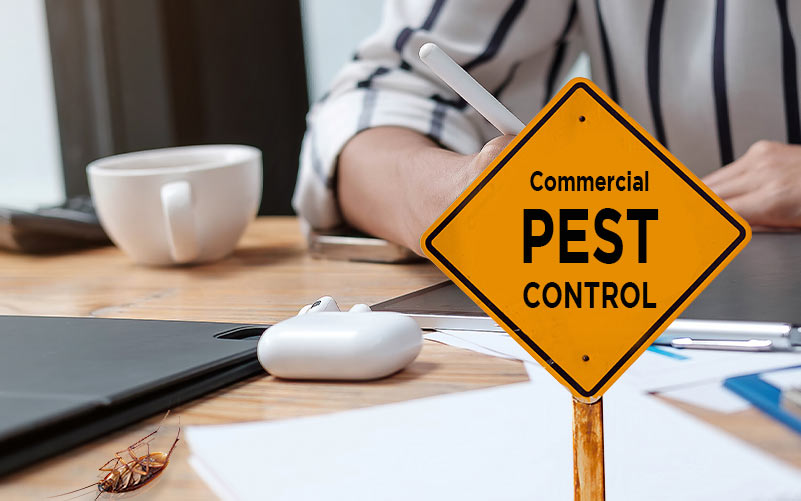Bed Bug Treatment Failure: Comparing Chemical Vs. Non-Chemical Solutions
In the realm of bug control, specifically when handling the consistent concern of bed pests, the selection between chemical and non-chemical therapy remedies can be a pivotal one. Both methods use distinct advantages and drawbacks, influencing elements such as efficiency, safety factors to consider, and total expense. By checking out the nuanced details of each method, a clearer understanding of which path to go after in attending to a bed insect invasion can be obtained.
Efficiency of Chemical Therapies
Chemical treatments for bed insect infestations have been widely identified for their quick and powerful efficiency in eradicating these parasites. When taking into consideration the efficiency of chemical treatments, it is critical to comprehend that they can offer a fast and complete remedy to a bed pest problem.
In addition, chemical therapies have the advantage of supplying residual results, implying that they can proceed to eliminate bed pests even after the first application. This recurring action is specifically useful in combating any prospective re-infestations. In addition, the fast activity of chemical treatments can bring relief to people facing severe bed bug problems, permitting them to restore control of their living rooms quickly.
Security Interest In Chemical Solutions
One essential element that calls for mindful consideration when using chemical options for bed pest therapy is ensuring the safety of passengers and the atmosphere. While chemical therapies can be reliable in removing bed insects, they may posture threats if not handled properly. Among the main safety interest in chemical remedies is the prospective harm they can create to human health and wellness. Exposure to particular chemicals utilized in bed insect treatments can cause breathing issues, skin irritability, or other damaging reactions, especially in people with pre-existing conditions or level of sensitivities. Additionally, inappropriate application or dosage of chemical pesticides can cause harmful residues lingering in the cured area, posturing long-lasting wellness risks to passengers.
Furthermore, the ecological impact of chemical remedies is another significant factor to consider. Some pesticides used in bed insect therapies might be unsafe to helpful bugs, wild animals, and ecological communities if they seep right into the dirt or water supply. It is necessary to utilize chemical treatments carefully, following safety guidelines, and thinking about less harmful choices to minimize these risks and make certain the efficient and secure management of bed pest infestations.
Benefits of Non-Chemical Techniques
Taking into consideration the potential security problems and environmental effect associated with chemical solutions for bed bug therapy, checking out non-chemical strategies presents an encouraging choice with a number of unique advantages. Non-chemical treatments are eco pleasant, as they her latest blog do not contribute to air or water air pollution, making them a lasting option for insect control.
Furthermore, non-chemical solutions can be effective in targeting bed insects, consisting of hard-to-reach areas where chemical therapies might not permeate. Techniques such as warmth treatment, vacuuming, heavy steam cleansing, and cushion coverings supply complete obliteration without making use of hazardous chemicals. Moreover, non-chemical approaches can be less turbulent, needing marginal preparation and enabling quicker reentry right into dealt with areas. In general, choosing for non-chemical bed bug therapy approaches not only prioritizes safety and security and environmental management however also guarantees reliable and comprehensive parasite control.
Limitations of Non-Chemical Treatments

In addition, click reference non-chemical treatments often need several applications to accomplish effective obliteration. This can be lengthy and might not try here always guarantee full elimination of all bed bugs and their eggs, specifically in concealed or hard-to-reach areas.
In addition, the success of non-chemical treatments heavily depends on correct implementation and thoroughness, which can be testing for individuals without professional knowledge. Inadequate application of non-chemical methods may cause insufficient elimination, causing persistent infestations and the requirement for added treatments.
Therefore, while non-chemical therapies have their benefits, it is vital to acknowledge these restrictions and consider them when determining the most efficient strategy for managing bed pest infestations.
Expense Contrast: Chemical Vs. Non-Chemical Options
Provided the limitations connected with non-chemical therapies, an important element to examine in the context of bed pest monitoring is the price contrast between chemical and non-chemical alternatives. Chemical treatments generally entail the application of pesticides by professionals, which can vary from $250 to $900 per space, relying on the extent of the problem and the dimension of the location to be dealt with. In contrast, non-chemical therapies like warm treatment or heavy steam can be more expensive, with costs ranging from $1,000 to $6,000 for a whole home. While the preliminary price of chemical therapies might seem reduced, several therapies might be called for to completely eradicate the problem, possibly boosting the general expense. On the other hand, non-chemical options might supply a much more lasting and green option, although they can be cost-prohibitive for some people. Eventually, when considering the expense of bed insect therapy options, it is necessary to consider the upfront expenditures versus the effectiveness and lasting sustainability of the chosen approach.
Verdict

Taking into consideration the prospective safety worries and ecological impact linked with chemical remedies for bed pest treatment, checking out non-chemical strategies provides a promising alternative with a number of unique advantages.Given the limitations associated with non-chemical therapies, an essential aspect to evaluate in the context of bed insect administration is the expense comparison in between chemical and non-chemical options. In contrast, non-chemical treatments like warmth therapy or heavy steam can be extra costly, with prices varying from $1,000 to $6,000 for a whole home. While the preliminary price of chemical treatments might seem reduced, numerous treatments may be needed to completely eradicate the problem, potentially boosting the general cost.In conclusion, when contrasting chemical and non-chemical bed insect treatment choices, it is important to think about performance, safety, benefits, constraints, and price.